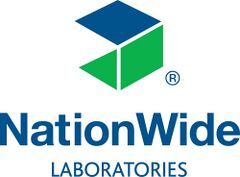Difference between revisions of "Aspartate aminotransferase"
Fiorecastro (talk | contribs) |
|||
| Line 2: | Line 2: | ||
== Introduction == | == Introduction == | ||
AST is not liver specific and is found in most tissues. Activity is relatively high in liver, skeletal and cardiac muscle. Significant increases may occur with liver or muscle damage or with haemolysis (in vitro or delayed removal of serum from a clot may cause mild to moderate increases). It is found in the cytosol and mitochondria of hepatocytes and is released into the blood due to hepatocellular damage and necrosis. In liver disease increases in AST usually parallel ALT. Therefore elevated AST and CK with normal ALT are more suggestive of muscle damage. There is no real advantage in measuring AST rather than ALT. The half life is about 12 hours in the dog, less in cats and 7 to 8 days in horses. | AST is not liver specific and is found in most tissues. Activity is relatively high in liver, skeletal and cardiac muscle. Significant increases may occur with liver or muscle damage or with haemolysis (in vitro or delayed removal of serum from a clot may cause mild to moderate increases). It is found in the cytosol and mitochondria of hepatocytes and is released into the blood due to hepatocellular damage and necrosis. In liver disease increases in AST usually parallel ALT. Therefore elevated AST and CK with normal ALT are more suggestive of muscle damage. There is no real advantage in measuring AST rather than ALT. The half life is about 12 hours in the dog, less in cats and 7 to 8 days in horses. | ||
| − | |||
| − | |||
== Small Animals == | == Small Animals == | ||
Revision as of 13:52, 12 April 2022
Introduction
AST is not liver specific and is found in most tissues. Activity is relatively high in liver, skeletal and cardiac muscle. Significant increases may occur with liver or muscle damage or with haemolysis (in vitro or delayed removal of serum from a clot may cause mild to moderate increases). It is found in the cytosol and mitochondria of hepatocytes and is released into the blood due to hepatocellular damage and necrosis. In liver disease increases in AST usually parallel ALT. Therefore elevated AST and CK with normal ALT are more suggestive of muscle damage. There is no real advantage in measuring AST rather than ALT. The half life is about 12 hours in the dog, less in cats and 7 to 8 days in horses.
Small Animals
Causes of increased AST activity
- Hepatopathies (see ALT)
- Skeletal muscle damage, including overexertion/overactivity
- Cardiac muscle disorders including congestive heart failure
Complementary tests
Plasma AST activity is usually determined in conjunction with other tests of hepatocellular damage and skeletal muscle damage specifically ALP, ALT and GGT for hepatocellular damage and CK for skeletal muscle damage.
Equine
Common causes of increased AST activity
- Acute myopathy (exertional rhabdomyolysis, post exercise)
- Hepatopathies
- Other muscle disease for example, nutritional myodegeneration
- Haemolysis
Following an episode of azoturia, AST levels peak at 24-48 hours and decline slowly over 7-10 days returning to baseline levels by 10-21 days. This contrasts with CK which peaks after 6-12 hours and declines rapidly over 2 days returning to baseline levels by 3-4 days.
Complementary tests
Plasma AST activity should be assessed along with GLDH and GGT (hepatic disease) and CK (muscle damage including exertional rhabdomyolysis). Due to the different half-lives CK with AST is useful to assess recovery from acute myopathy.
